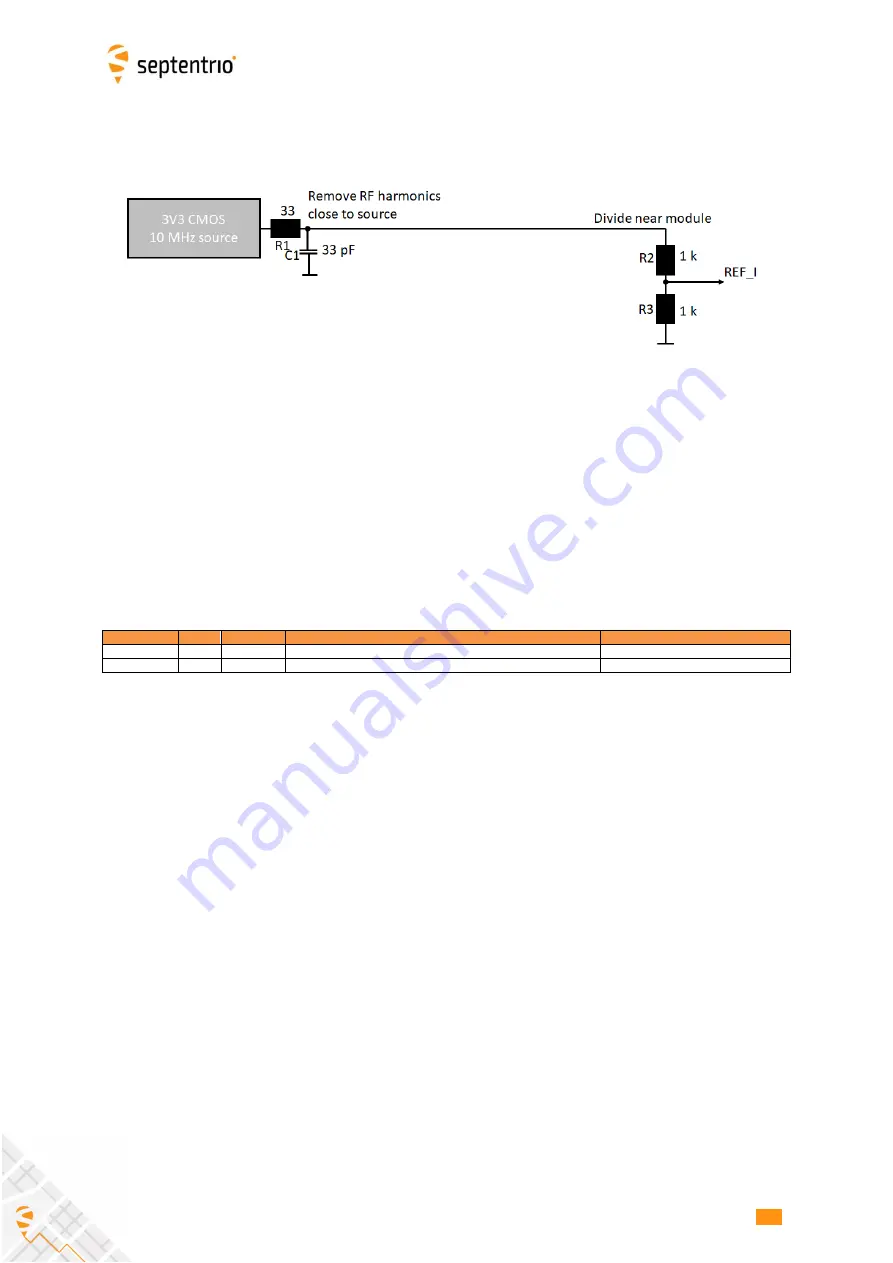
18
18
Pinout and I/O Description
18
with the input capacitance of the REF_I input (8 pF). Below an example circuit. The
module has a build-in DC-decoupling capacitor.
Note that support for an external frequency reference is under permission. Make sure
that the FreqSync permission is enabled to use this feature. Using an external reference
without corresponding permission will cause the module to block most SBF output.
3.8
Event/TimeSync inputs
The module features two event inputs, which can be used to time tag external events with
a time resolution of 20ns.
Pin Name
Type
Level
Description
Comment
EVENTA
I, PD
1V8_LVTTL
Event A or TimeSync input. The pull-down is about 200 kOhm.
Leave unconnected if not used
EVENTB
I, PD
1V8_LVTTL
Event B or TimeSync input. The pull-down is about 200 kOhm.
Leave unconnected if not used
Use the
setEventParameters
user command to configure the EVENT pins (e.g. to set the
polarity). Note that this feature requires the TimedEvent permission to be enabled in the
module. For correct detection, the minimum time between two events on the same
EVENTx pin must be at least 5ms, and there must be no more than 20 events in any
interval of 100ms, all EVENTx pins considered.
If the TimeSync permission is enabled, the event inputs can also be configured as
TimeSync source using the
setTimeSyncSource
command. When an event pin is
configured as TimeSync source, the mosaic-X5 expects to see a one-pulse-per-second
(1PPS) signal on that pin. It will then synchronize its internal time base (i.e. the time at
which GNSS measurements are sampled) to that 1PPS signal. TimeSync is typically used
in conjunction with ExtFreq (see section 3.7.2) to fully synchronize the module internal
time base with the time of an external clock.
Note that there is a delay of 15 to 50 ns between the PPS pulse at the EVENT pin and the
module internal time base. That delay is dependent on the phase difference between the
10 MHz frequency at the REF_I pin and the PPS pulse at the EVENT pin. It is possible to
measure this delay by synchronizing the PPS OUT pulse with the internal time base, with
the
setPPSParameters,,,,RxClock
command.
Note the timing signals use 1.8V logic. If 3.3V logic would be required, the EVENT-signals
can be generated via a resistive divider, considering the integrated pull-down (see 2.4.2).
















































